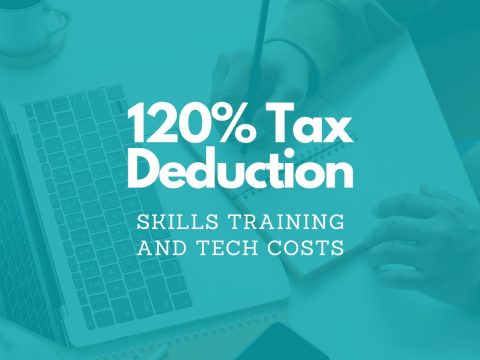Federal Budget 2021-2022: Spend, Spend, Spend!
On Tuesday night the Australian Government delivered the 2021-2022 Federal Budget. It was widely anticipated to be a high spending budget, with little of the fiscal restraint of the pre-COVID era, and this was certainly the case.
The budget deficit will reach $161 billion in 2020-21, before falling to $57 billion in 2024-25.
Mr Frydenberg said, “With more Australians back at work, this year’s deficit is $52.7 billion lower than was expected just over 6 months ago in last year’s Budget.” A ‘silver lining’ indeed.
Net debt will increase to $617.5 billion or 30% of GDP this year and peak at $980.6 billion or 40.9% of GDP in June 2025. We are none the wiser as to how the government plans to pay off the debt.
The difficult work of tax and transfer payment reform has been pushed to future years.
Of the many points covered, here are some the key initiatives we think will most affect the Allworths community:
- Temporary full expensing of plant and equipment costs and the tax loss carry back incentives have been extended an additional year to 30 June 2023.
- The Budget extends for a further year the personal Low and Middle-Income Tax Offset, introduced as part of the government’s coronavirus response. Low and middle income earners will receive up to $1,080 for individuals or $2,160 for couples.
- The government has removed the work test on voluntary non-deductible and salary-sacrificed superannuation contributions by people aged 67 to 74.
- From 1 July 2022, the minimum age for the ‘downsizer’ superannuation contribution will be lowered from 65 to 60. This will allow Australians nearing retirement to make a one-off post-tax contribution of up to $300,000 per person (or $600,000 per couple) when they sell their family home.
- The Administrative Appeals Tribunal will be granted the power to intervene in ATO debt recovery actions, rather than needing to go to the Federal Court.
- The government will establish a new “patent box” from 1 July 2022, where income earned from new patents that have been developed in Australia will be taxed at a concessional 17% rate. The patent box will apply to the medical and biotech sectors and the government will consult on expanding it to the clean energy sector.
- The tax residency test for individuals will be replaced with a simple 183 day test where an individual who spends 183 days or more in Australia is regarded as a tax resident.
- The Budget contains $17.7 billion in new spending for aged care – across residential and home care, and across five years to 2024-25.
Below we go into more detail about the key announcements:
Business incentives
- Businesses with aggregated annual turnover of up to $5 billion will be able to deduct the full cost of eligible new depreciable assets of any value in the year they are installed. The full expensing period is available from 7:30pm AEDT on 6 October 2020 to 30 June 2023.
- Companies with turnover up to $5 billion will be able to carry back losses from the 2019-20, 2020-21, 2021-22, and 2022-23 income years to offset previously taxed profits in the 2018-19, 2019-20, 2020-21, and 2021-22 income years. This will generate a tax refund on lodgement of the 2020-21, 2021-22, and 2022-23 income tax returns.
- The government is encouraging investment in, and the retention of, Australian medical and biotech technologies by introducing a ‘patent box’. Over twenty countries currently have patent boxes, including the UK and France. From 1 July 2022 the patent box will tax income derived from Australian medical and biotech patents at a 17% effective concessional corporate tax rate. Normally corporate income is taxed at 30% or 25% for SMEs. The patent box encourages businesses to undertake R&D activities in Australia and keep patents here.
- Taxpayers who purchase patents, registered designs, copyrights or in-house software, will be given the opportunity to self-assess their effective life for decline in value. The measure comes into effect for specified intangible assets acquired after 1 July 2023.
Individuals
- The tax residency test for individuals will be replaced with a simple physical presence test where an individual who spends 183 days or more in Australia is regarded as a tax resident. Individuals who don’t meet the primary test will be subject to secondary tests that consider a combination of physical presence and other measurable, objective criteria.
Superannuation
- The government will amend the work test rules to allow retirees to increase their voluntary contributions to superannuation.
- From 1 July 2022, individuals aged 67 to 74 will no longer be required to meet the work test when making or receiving non-concessional superannuation contributions or salary sacrificed contributions. These individuals will also be able to access the non-concessional bring forward arrangement, subject to meeting the relevant eligibility criteria.
- The existing $1.6 million cap on lifetime superannuation contributions will continue to apply (increasing to $1.7 million from 1 July 2021). The annual concessional and non-concessional caps will also continue to apply.
- Access to concessional personal deductible contributions for individuals aged 67 to 74 will still be subject to meeting the work test.
- The government will simplify the retirement system by providing consumers with a temporary option to transition from legacy retirement products to more flexible and contemporary retirement products. A two year period will be provided for conversion of market-linked, life-expectancy, and lifetime pension and annuity products. It will not be compulsory for individuals to take part.
- Retirees with these products, who choose to, will be able completely exit these products by fully commuting the product and transferring the underlying capital, including any reserves, back into a superannuation fund account in the accumulation phase. From there they can decide to commence a new retirement product, take a lump sum benefit, or retain the funds in that account.
- The employer exemption from superannuation guarantee payments for individuals earning less than $450 in salary or wages in a calendar month will be removed. The government expects to have removed this exemption category before 1 July 2022.
As always, if you require any assistance decoding the budget and what it means for your family or business, please contact us for a chat soon.




